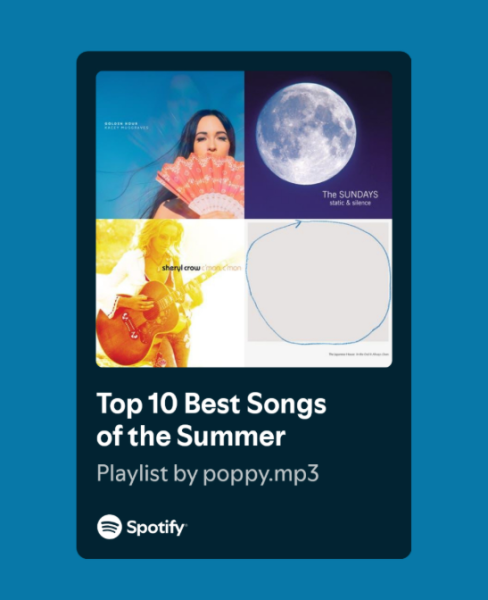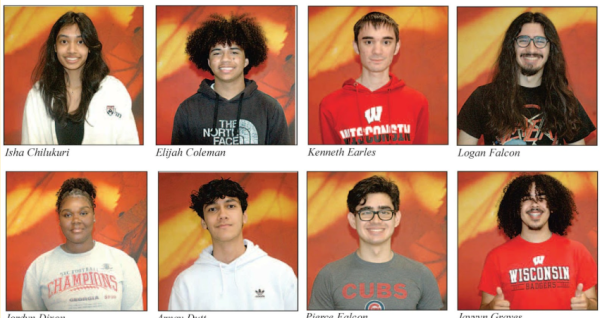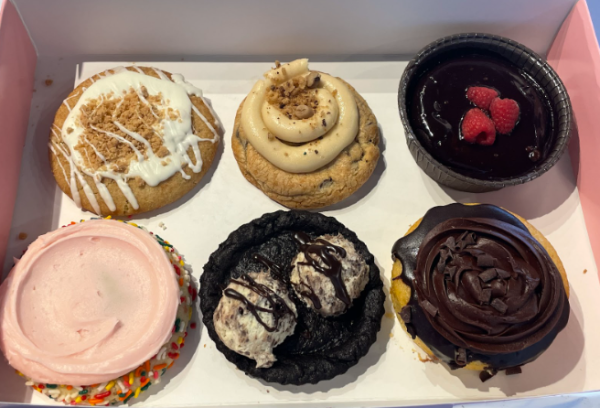TikTok and the Death of the Tweenage Girl
Lalaina Ratsimihah (screenshot)
TikTok seems to be glamorizing the idea of femininity and girlhood. Being a girl is desirable, but girls are shown how to put on makeup just the right way so they look more like “that girl” and less like little girls. Girls aren’t allowed to be themselves, but instead, they are told how to be the perfect girl. TikTok and its creators spread a message that teaches girls to hate themselves starting at a very young age. The “tween” that we used to know is nonexistent. It goes from little girl to “that girl” to woman. What can we do to stop this rapid acceleration, and how do we help girls to love themselves?
Content warning: mentions of teenage sexuality, eating disorders, pornography and self-harm.
The year is 2016. You are a freshly-turned eleven-year-old girl. You are not yet twelve or thirteen, but you are already excited for your teenage years. All the magazines and Disney Channel shows you have consumed have been preparing you for this moment. You are walking in the mall with your family. You point out a store to your mom. The greatest store in the world, as far as you are concerned: Justice.
Justice holds the secrets to teenage girlhood. Whether it is through the brightly colored skinny jeans or sequined tops, you know that you can find your inner woman within these four walls. You rifle through the overpriced clothing knowing that somewhere, somehow you will find her.
The year is 2023, and Justice filed for bankruptcy in December of 2020. You are no longer interested in brightly colored clothing, but rather the bright screen you carry around constantly. During the summer of sixth grade, your mother begrudgingly gave you your first smartphone “for emergencies only,” and you have been hooked ever since. The global pandemic certainly did not help either. Whether it is the newest TikTok trend or Instagram feature, you cannot get enough.
You no longer get information on the newest trends from magazines or celebrities, but rather from TikTok stars and influencers. If you fail to stay connected, you will miss out on what everyone else is doing and wearing and laughing at.
But, it is not like you are addicted or anything. All of your friends are on social media, and you are just using it as a way to connect with them. Right? You do not spend hours on TikTok, scrolling mindlessly until your eyes burn, right? You can stop anytime; you just do not want to right now. You have to be “connected,” somehow.
The integration of social media into our collective consciousness has severely interrupted and accelerated the normal maturing process. Young girls are no longer aging at a normal rate, and their self-esteem is greatly impacted. Looking at the unending library uber-hot, perfect influencers and girls online, it is no mystery why.
TikTok is the biggest culprit when it comes to this cultural shift. Marketed as a fun video-sharing platform to connect with friends and make cool videos, this app has exposed countless harmful people and ideas to the many children using it.
The app started out differently. Before it was TikTok, it was Musical.ly, a social media platform mainly used for lip-syncing videos and cool transitions. A lucky few found their claim to fame through Musical.ly, usually because they were conventionally attractive or relatable. Musical.ly started many trends like the “Kylie Jenner Lip Challenge” and was downloaded by over 70 million users, but it never reached the same popularity as its eventual successor.
Even though it was very cringeworthy at times, Musical.ly was almost exclusively for tweens.
Musical.ly was constantly gaining criticism by adults on the internet, but that was because it was for middle schoolers on the internet. Jacob Sartorius was not concerned with the thoughts of someone with a nine to five; he was concerned with the thoughts of their tween-aged siblings and children, though.
Musical.ly was eventually bought out by the Chinese company ByteDance, which created the app’s successor, TikTok. While the migration from Musical.ly to TikTok was rocky at first, warranting many scandals and cringe content, eventually the general public accepted TikTok’s role in popular culture as one of the largest social media platforms to date.
TikTok’s reign over pop culture is doing more harm than good, though. Users of all ages, free from the mainly tween-aged user base of Musical.ly, all are now scrolling until their brains are fried. The app is cooking the attention spans of its users with specific algorithms meant to supply them with eight-second doses of instant pleasure, allowing users to consume endlessly and mindlessly. According to Forbes, 167 million TikToks are watched every minute. All of these videos are supplied by random creators that the algorithm is shoveling to users every millisecond, creating an unstoppable cycle of consumption and creation. TikTok’s ability to remember what users like (or absolutely despise) and feed them millions of identical videos that serve the sole purpose of numbing your brain is harrowing and quite impressive.
TikTok has an age recommendation of twelve and older within its user guidelines, and they offer parental controls and age restrictions to foster a safer environment for children on their app. But even with all of these switches and buttons that children can freely access within their settings, TikTok has still somehow managed to supply their young users with harmful, toxic content.
Young girls are introduced to video trends like “#WhatIEatInADay” and “#thatgirl,” which teach them to strive for an idealized, aestheticized version of womanhood and beauty, effectively making it seem unattainable.
Trends like “#WhatIEatInADay” are directly linked to disordered eating, and they encourage girls to start thinking about their eating habits and comparing them to those of adult women. Many of these videos have comments from children saying things like, “I’m not going to eat today” or “I wish I looked like that.” These types of comments are indicative of a much larger problem. Young girls are being told how they should eat, what they should look like and how they should strive to live before they are old enough to even understand who they are and what that means. All of these instructions are found right at their fingertips within their For You page.
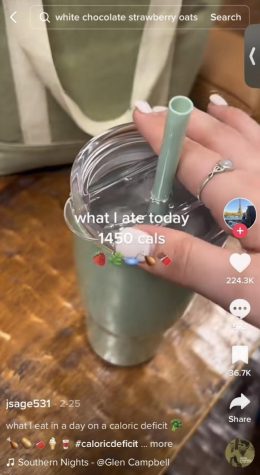
When scrolling through a young girl’s For You page, it becomes clear that TikTok and its creators have an obsession with labels and finding out just what type of girl users are. Whether it is clean girl, coquette, stargirl, or coastal granddaughter (I am still pretty confused about that one), they must be a type of girl, and that type of girl only does certain things and looks a certain way.
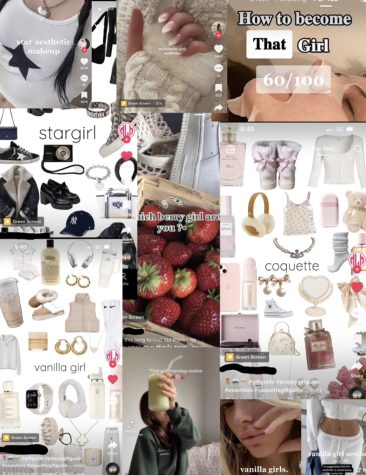
There is a sort of pressure that’s put onto these young girls, urging them to find out who they are right away and that they will be outcasts if they do not. A lot of these videos are flooded with comments from girls saying they wished they were pretty or they wished they had the money to maintain a certain aesthetic and lifestyle. If they do not fit within these aesthetics, they feel that they will be ostracized and deemed not good enough. Many of these aesthetics also center around a look that is strictly white, skinny and pretty, essentially alienating girls with different body types and girls of color.
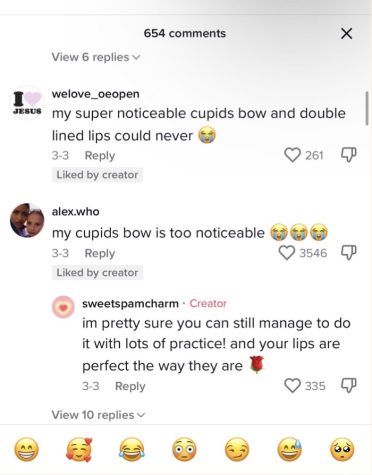
According to a survey conducted by the Renfrew Center Foundation, 65 percent of the girls surveyed said they started wearing makeup between the ages of eight and 13, right in the middle of their tweenage years. At least 20 percent of the surveyed girls report having negative feelings about themselves when they are not wearing makeup.
When girls are told from a young age that they need to look a certain way to be beautiful, pretty or desirable, it becomes harder and harder for them to like the way they look without those things. If being a vanilla girl or a coquette girl is the way to be beautiful, and one can only achieve these aesthetics by doing their makeup a certain way and buying certain products, how can young girls feel beautiful without any of those things?
Something that young girls fail to understand is these aesthetics and types of girls are not real at the end of the day. Once those creators stop recording, they are not living the rest of their lives as old-money girls or blueberry girls; they just live their lives as regular, adult women. These young girls see these influencers and how perfect their lives look, and they cannot stop thinking about how inferior their own lives are.
“I think [social media] tricks me into believing what’s not real and feeling bad about myself, said Sarah Larsen, a junior at Middleton High School. “It made me want to be someone I wasn’t.”
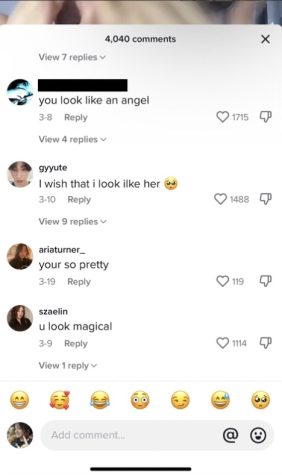
Social media puts so much pressure on the self-image of young girls, and it exposes them to things that they would not have known without it. Children are exposed to pornography and toxic beauty standards way before their brains are developed enough to process that information correctly. These concepts are not only digested by these children but they are also regurgitated and spun to be even more toxic.
This TikTok phenomenon is not slowing down anytime soon. The more you scroll, the worse you see, and it gets even worse if the app notices you’re a young girl. According to the New York Times, TikTok starts showing 13-year-old girls content tied to eating disorders and self-harm within 30 minutes of joining the platform. Young girls are more likely to be targeted and taught to hurt themselves. All of these TikToks on how to be beautiful and how to be skinny and desirable just boil down to one very upsetting idea: the sexualization of teenage girls.
As was said, being a girl is desirable. You should want to be a girl, but you have to be a girl that can be desired and pretty and sexualized. The death of the tweenage girl is the death of the innocence that is found within her. Where she is encouraged to wear tankinis and colorful skinny jeans instead of thongs and crop tops. Where her body is truly hers instead of someone else’s. Where she can choose not to wear makeup or do her hair a certain way. Letting her be a girl would be depriving others of seeing her as a woman. As something to own.
The sexualization of young girls takes away their autonomy, and they are once again subject to the opinions and thoughts of others. A sophomore at Middleton High School, requesting anonymity, describes the feeling of social media as “[always having] to appease someone and never being for yourself fully.”
Nothing on TikTok is for the children using it. It teaches them to live for others and shape themselves for the approval of others. How can you like how you look if the app that you spend hours on is constantly telling you to hate it? How can you not want to be pretty and “sexy” if that is the only part of womanhood you were informed of?
TikTok is the most prolific social media platform around. With over 1 billion users and almost half of those users being under the age of 30, children are being raised by this app. This app that tells girls they are ugly and fat and not good enough. This app that teaches them how to hurt themselves and sexualize themselves. It is nothing short of gut-wrenching, and these girls deserve better.
The woman that young girls wanted to be could not be found within the bright white walls of Justice, but she is unattainable when she is packaged under all of these labels and beauty products. Being a woman is not found within a product or video: it is found within yourself. If you have killed the tweenage girl inside of you, no one is blaming you. She was probably embarrassing and cringeworthy and immature. But she was still beautiful and pretty, and she deserved better.
The views and opinions expressed in this article are those of the author(s) and do not necessarily reflect the official policy or position of The Cardinal Chronicle. Any content provided by our journalists is of their opinion and is not intended to malign any religion, ethnic group, club, organization, company, individual or anyone or anything.




